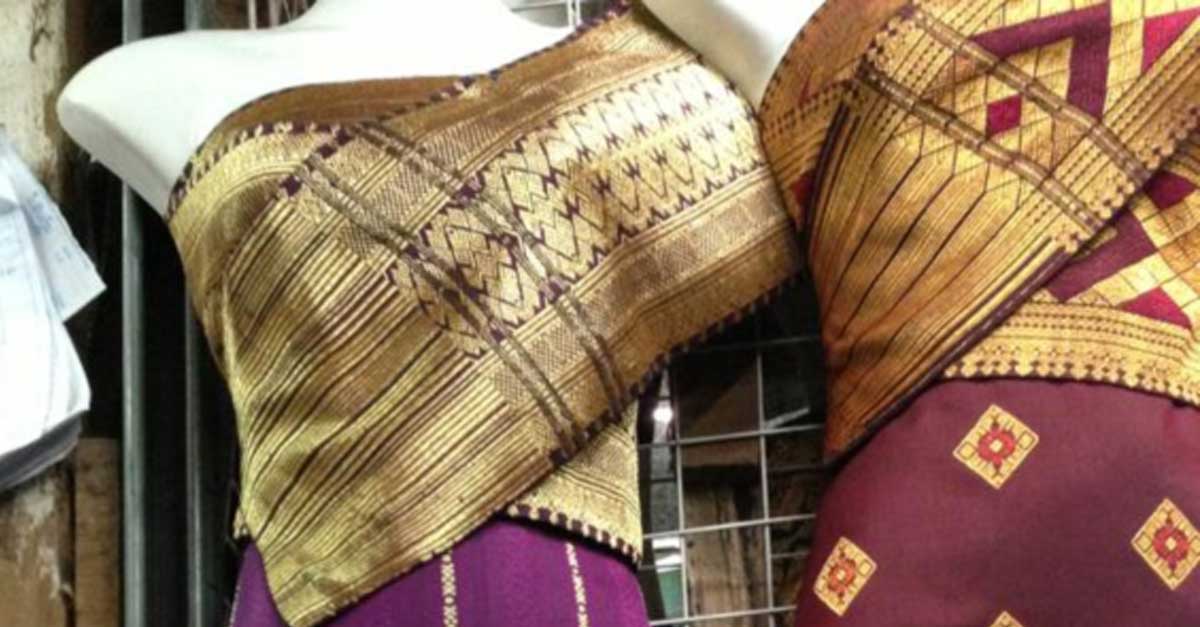Chinese machine-made imitations of traditional Lao skirts and ornamental dress accessories are having an effect on the sales of handmade Lao products.
A recent Vientiane Times article suggests that sales of handmade products by local Lao artisans has dropped by 30 percent since imitation items entered the market in recent years.
The workmanship of traditional handmade items is superior to that of the Chinese factory-made alternatives, however, and the promotion of traditional items also creates employment.
Many of the larger textile operations in Laos that make Lao skirts (sinh) and ornamental accessories (pakding) employ hundreds of workers, creating employment and offering stable incomes to those in need.
The materials used usually always come from Laos, including silks and other textiles.
Meanwhile, Chinese copies of these products are priced relatively cheaply, with pakding as low as 20,000 or 30,000 kip. A Chinese machine-made sinh can be priced lower than 200,000 kip.
Artisans and business-people are calling upon the authorities to ban the sale of factory-made items in a bid to preserve the traditional craft, which is a way of life for many Lao people.
Meanwhile, consumers argue that with the rising cost of living, they cannot afford to continue purchasing traditionally made items, some of which are priced at over 2 million kip.
“As a young woman I am expected to attend a lot of weddings and religious ceremonies. I feel that should wear a different outfit to each event, and I just can’t afford that many handmade items,” said one consumer.
Banning factory-made items may be a simple solution for artisans, however consumer concerns should also be heard. The traditional Lao skirt is compulsory dress in many offices, and rising prices could mean hardship for some.



